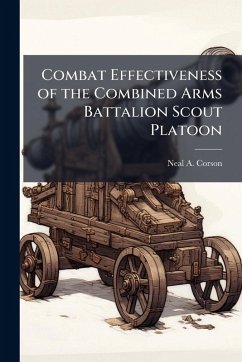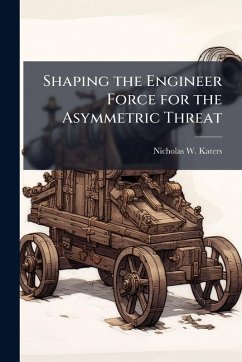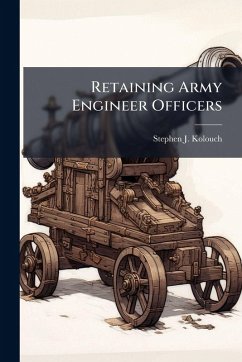
Is it Time to Give the U.S. Army Engineer Battalion (Combat) (Heavy) a Facelift?
Versandkostenfrei!
Versandfertig in über 4 Wochen
17,99 €
inkl. MwSt.

PAYBACK Punkte
9 °P sammeln!
This monograph focuses on a construction unit in the United States Army, the Engineer Battalion (Combat) (Heavy). The Engineer Battalion (Combat) (Heavy) is the main organization, providing the U.S. Army the bulk of its heavy construction capability. This monograph specifically examines the organization and capabilities of the battalion and determines if the U.S. Army should make changes to the battalion organizational structure to make it a more effective combat multiplier for full spectrum operations in the 21st century. The concept of modularity is defined from doctrinal sources and an asse...
This monograph focuses on a construction unit in the United States Army, the Engineer Battalion (Combat) (Heavy). The Engineer Battalion (Combat) (Heavy) is the main organization, providing the U.S. Army the bulk of its heavy construction capability. This monograph specifically examines the organization and capabilities of the battalion and determines if the U.S. Army should make changes to the battalion organizational structure to make it a more effective combat multiplier for full spectrum operations in the 21st century. The concept of modularity is defined from doctrinal sources and an assessment is made to determine if the battalion configurations affords the flexibility required to achieve this. There is a tendency to look to civilian models, which generally have functionalized companies, when recommending changes to military construction organizations. This monograph examines the differences between operating environments of civilian construction firms and military construction units and assesses how this might impact the organizational design of a U.S. Army troop construction organization. The monograph briefly covers the history, employment and reasoning for the present organization of the battalion. Case studies of the use of combat heavy engineer battalions in Operations Desert Shield/Desert Storm (1990-1991), and operations in Bosnia (1995-2000) are examined to determine the battalion's overall effectiveness in providing general engineering support to these operations. These case studies provides a basis for examining the use of the battalions in Major Theater War (MTW) operations of short duration in a relatively mature theater, and Stability and Support Operations (SASO) of long duration in an immature and battle damaged theater. Additionally, the present organizational structure of the troop heavy construction organizations in the U.S. Navy and the U.S. Air Force are analyzed to determine if there are any lessons the Army can apply to the organization This work has been selected by scholars as being culturally important, and is part of the knowledge base of civilization as we know it. This work was reproduced from the original artifact, and remains as true to the original work as possible. Therefore, you will see the original copyright references, library stamps (as most of these works have been housed in our most important libraries around the world), and other notations in the work. This work is in the public domain in the United States of America, and possibly other nations. Within the United States, you may freely copy and distribute this work, as no entity (individual or corporate) has a copyright on the body of the work. As a reproduction of a historical artifact, this work may contain missing or blurred pages, poor pictures, errant marks, etc. Scholars believe, and we concur, that this work is important enough to be preserved, reproduced, and made generally available to the public. We appreciate your support of the preservation process, and thank you for being an important part of keeping this knowledge alive and relevant.












